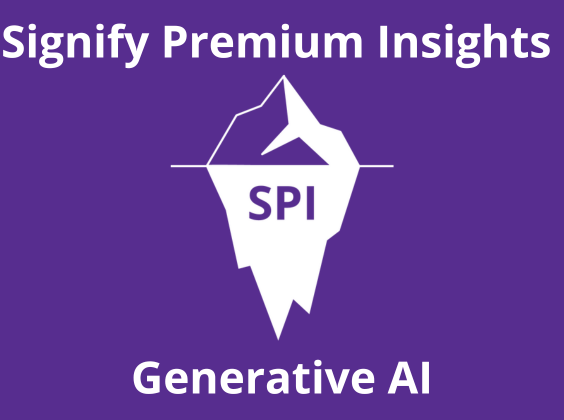
Written by

Cranfield, UK, 30 September 2024 –
Welcome to this month’s edition of Generative AI in Healthcare, where we’ve curated the most noteworthy news and developments. If you think we missed any key announcements, feel free to share them in the comments below.

Highlights of the Month
This month saw several major announcements, including: Harrison.ai’s new medical imaging foundation model, a new partnership between DeepHealth and HOPPR, Research paper from genhealth.ai and a foundation model by Weizmann Institute of Science in collaboration with NVIDIA. Lastly, OpenAI launched its latest “Strawberry” or o1 model.
These announcements prompt an intriguing question: Can general-purpose, “vanilla” generative AI models replace domain-specific ones in healthcare? Let’s explore.
The Evolution of Vanilla Generative AI Models
The creators of vanilla models like OpenAI and Anthropic are betting on their continued evolution to outperform earlier versions. These advancements hinge on three critical elements: data, compute, and algorithms.

From a compute perspective, investment is skyrocketing. As Leopold Aschenbrenner, a former OpenAI employee, notes in his “Situational Awareness” series: “As AI revenue grows rapidly, trillions of dollars will flow into GPU, data centres, and infrastructure by the end of the decade.” In 2024, more capital expenditure is being funnelled toward AI infrastructure than ever before.
On the data side, generative AI providers are building strategic partnerships. For example, OpenAI has recently partnered with media groups such as GEDI, TIME, and Vox Media, as well as healthcare entities like Oscar Health, Color Health, Moderna, and Sanofi. These partnerships aim to enrich the models with more diverse and domain-relevant data.
When it comes to algorithms, OpenAI’s o1 models are designed with better reasoning capabilities than previous versions. Rather than just predicting the next word in a sequence, o1 models employ a “chain-of-thought” reasoning process to approach problems step by step. This makes them more adept at handling complex queries that require multistep problem-solving strategies.
In fact, the o1 model recently demonstrated its reasoning prowess by scoring over 120 points on a new IQ test from Mensa Norway—an independent test designed to ensure its data hadn’t been included in the model’s training.

Looking ahead, techniques like Mixture of Experts (MoE) could further enhance AI models. MoE works by dividing a neural network into specialized “experts,” with a router selecting the most suitable expert for each task. This leads to better efficiency and specialization, similar to how human experts collaborate to produce optimal results.
Vanilla vs. Domain-Specific Models: What’s the Right Choice?
The question remains: Do we need medically fine-tuned models, or will vanilla models suffice as they continue to improve?
As usual, the answer is, it depends.
For non-critical tasks, vanilla models may be more than enough. Take Salesforce’s EinsteinGPT, for example, which uses OpenAI’s model to enable CRM customers to query datasets in natural language or create personalized marketing campaigns. In these cases, the current generative AI technology is already sufficiently advanced.
For slightly more critical healthcare tasks, having a more sophisticated model, like OpenAI’s o1-preview, can be advantageous. As detailed by Nikhita Luthra and Lauren Pendo from Oscar Health, the o1-preview model excels in:
- Autonomy and Precision: The model autonomously generates steps to solve problems, showing improved precision and confidence in its outputs.
- Claims Pricing: It navigates complex rules autonomously, improving accuracy compared to its predecessors.
- Clinical Guidelines: o1-preview can evaluate guidelines against medical records, potentially speeding up care approvals.
- Fraud Detection: It identifies fraud indicators with logical reasoning, enhancing review processes.
- Medical Records: o1-preview extracts clinical data with greater specificity, improving patient care.
- Administrative Tasks: It automates patient intake, reducing clinician workload and improving information quality.
When it comes to mission-critical tasks, like medical imaging, vanilla models may fall short. The training dataset is crucial here, and medical foundation models—like those from HOPPR and Harrison.ai—are trained on specialized datasets in fields like radiology, using vast quantities of scans and reports.
For example, the DeepHealth-HOPPR collaboration is focused on fine-tuning models for breast, prostate, and lung cancer detection. While vanilla models can be fine-tuned, they won’t match the proficiency of domain-specific models trained on high-quality, specialized data.
Moreover, in healthcare, models may need to meet regulatory standards, such as Software as a Medical Device (SaMD) clearance. This requires developers to work with regulatory bodies like the FDA and provide transparency into their training data—something commercially driven vanilla model vendors, such as OpenAI, may not prioritize.
Domain-specific vendors, on the other hand, handle patient data with a focus on de-identification and compliance with consent regulations. They work closely with data partners to ensure provenance and prevent data leakage, a level of governance not typically seen in vanilla models designed for broader use.
Conclusion: The Value-Risk Matrix
Ultimately, the future of generative AI in healthcare will likely see foundation model developers like HOPPR occupying the High-Risk, High-Value quadrant of the Value-Risk Matrix. Meanwhile, general AI vendors like OpenAI will continue to thrive in the High-Value, Low-Risk category, tackling less sensitive but equally impactful use cases.

I would love to hear your thoughts on this topic! Let’s continue the conversation in the comments. Thank you for investing your time in this update, and I wish you a fantastic day ahead! 👋
Did you find this round-up useful? Subscribe to Signify Research’s monthly newsletters to get immediate access to some of our more in-depth market-related Insights. The Signify Premium Insights require a subscription, but I’m happy to provide you with a free 30-day trial. Click below to sign up for a no-obligation trial.
Related Research
Generative AI Market Intelligence Service
This Market Intelligence Service delivers data, insights, and thorough analysis of the worldwide market potential for vendors leveraging Generative AI in healthtech. The Service encompasses Medical/Clinical IT, EMR & Digital Health, Pharma & Life Sciences, and Big Tech vendors, exploring their opportunities and strategies in the realm of generative AI
About The Author
Vlad joined Signify Research in 2023 as a Senior Market Analyst in the Digital Health team. He brings several years of experience in the consulting industry, having undertaken strategy, planning, and due diligence assignments for governments, operators, and service providers. Vlad holds an MSc degree with distinction in Business with Consulting from the University of Warwick.
About the AI in Healthcare Team
Signify Research’s AI in Healthcare team delivers in-depth market intelligence and insights across a breadth of healthcare technology sectors. Our areas of coverage include medical imaging analysis, clinical IT systems, pharmaceutical and life sciences applications, as well as electronic medical records and broader digital health solutions. Our reports provide a data-centric and global outlook of each market with granular country-level insights. Our research process blends primary data collected from in-depth interviews with healthcare professionals and technology vendors, to provide a balanced and objective view of the market.
About Signify Research
Signify Research provides healthtech market intelligence powered by data that you can trust. We blend insights collected from in-depth interviews with technology vendors and healthcare professionals with sales data reported to us by leading vendors to provide a complete and balanced view of the market trends. Our coverage areas are Medical Imaging, Clinical Care, Digital Health, Diagnostic and Lifesciences and Healthcare IT.
Clients worldwide rely on direct access to our expert Analysts for their opinions on the latest market trends and developments. Our market analysis reports and subscriptions provide data-driven insights which business leaders use to guide strategic decisions. We also offer custom research services for clients who need information that can’t be obtained from our off-the-shelf research products or who require market intelligence tailored to their specific needs.
More Information
To find out more:
E: enquiries@signifyresearch.net
T: +44 (0) 1234 986111
www.signifyresearch.net


